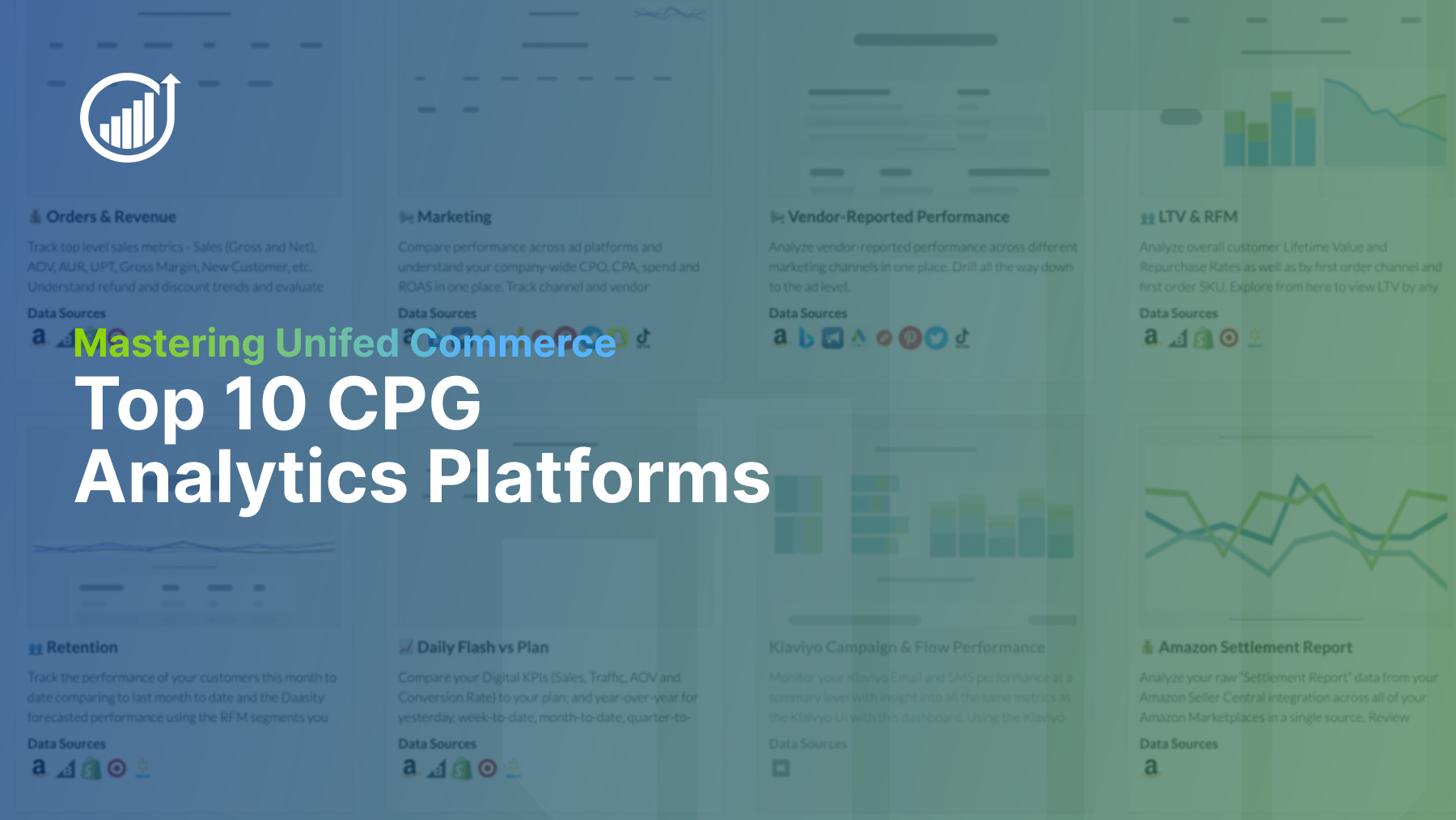Data-driven decision-making is key to driving profitability and growth. Yet many companies are falling behind, stuck in outdated approaches that limit their potential. Are you one of them? Let's explore three critical signs that your company's data strategy might be holding you back, and what you can do to turn things around.
For a comprehensive guide on transforming your organization into a data powerhouse, don't forget to download our full ebook.
Signs Your Company’s Data Strategy Is Lagging Behind
Let's are some obvious signs that your data strategy needs an upgrade:
1. Your Plans Lack Specific, Controllable Metrics
If your company's plans still revolve around vague, high-level targets like "increase revenue by X%," you're missing out on the power of data-driven strategy. These broad goals, while important, don't provide a clear roadmap for action. They leave teams guessing about how to achieve these targets and make it difficult to track progress effectively.
Modern, data-savvy companies build their plans around specific, controllable levers such as website traffic, average order value, and conversion rates. Without these granular, actionable metrics, your plans remain abstract and difficult to implement effectively. This lack of specificity can lead to misaligned efforts across departments and missed opportunities for optimization.
What to Do Instead:
Break down your high-level goals into specific, measurable metrics that your team can directly influence. For example, instead of just aiming to "increase revenue," set targets for:
- Increasing website traffic by X% through specific marketing channels
- Improving conversion rates by Y% through website optimization
- Boosting average order value by Z% through product bundling or upselling strategies
By focusing on these controllable levers, you create a more actionable, realistic plan that empowers your team to make data-driven decisions on a daily basis.
2. You're Stuck in Descriptive Analytics
While tracking what's happening in your business is important, it's not enough. If your company can't quickly diagnose why certain trends are occurring, you're operating at a basic level of data maturity.
Lack of diagnostic capability means you're likely slow to identify issues, understand their root causes, and implement necessary adjustments. In today's fast-moving markets, this delay can be costly.
Being stuck in descriptive analytics often means you're always playing catch-up, reacting to events after they've happened rather than proactively shaping outcomes. This reactive approach can lead to missed opportunities, slower response times to market changes, and difficulty in predicting future trends.
What to Do Instead:
Evolve your analytics capabilities to include diagnostic, predictive, and prescriptive analytics:
- Implement tools and processes for diagnostic analytics to understand the "why" behind your data trends
- Invest in predictive analytics to forecast future outcomes and prepare for various scenarios
- Develop prescriptive analytics capabilities to understand the best course of action
By advancing your analytics maturity, you'll be able to make faster, more informed decisions and stay ahead of market trends.
3. Your Planning Process Isn't Improving Over Time
A key indicator of a lagging data strategy is a static planning process. If each planning cycle feels like starting from scratch, without incorporating lessons from previous periods, you're not leveraging data effectively. This approach leads to repeating past mistakes, overlooking valuable insights, and failing to capitalize on successful strategies.
Data-driven companies continuously refine their planning process, using insights from past performance to create increasingly accurate and impactful plans. They view each planning cycle as an opportunity to learn and improve, leading to more efficient resource allocation and better business outcomes over time.
What to Do Instead:
Transform your planning process into a continuous learning cycle:
- Implement a system for capturing insights and lessons learned from each planning period
- Regularly review past performance data to identify trends, successes, and areas for improvement
- Use advanced analytics to simulate different scenarios and their potential outcomes
- Encourage cross-functional collaboration to ensure diverse perspectives are considered in the planning process
By treating your planning process as an evolving, data-driven practice, you'll create more accurate forecasts, set more achievable goals, and make better strategic decisions.
Don't Let Your Data Strategy Hold You Back
Recognizing these signs is the first step towards improvement. But how do you move forward? Transforming your organization into a data-driven powerhouse requires a comprehensive approach that addresses not just technology, but also processes, culture, and skills.
Our comprehensive ebook, "Building a Data-Driven Organization," provides in-depth strategies and practical tips to elevate your data game. From setting up the right infrastructure to fostering a data-driven culture, we cover it all. You'll learn how to:
- Choose the right technologies for your data needs
- Develop a data governance framework that ensures data quality and security
- Build a team with the right mix of technical and business skills
- Create a culture that embraces data-driven decision making at all levels
Need personalized advice? Or someone to just jump in and do it for you? Speak with our team at Daasity. Our skilled team of data engineers and strategists will be happy to support you every step of the way.






